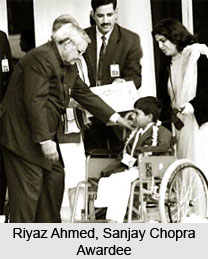Artillery in India is considered as a supporting arm of the Indian Army. For air and sea targets gunners operate in conjunction with air and naval forces. During the early days batteries were formed of guns taken from the ships on the Indian coast and were manned by European personnel. Other guns were captured from the Indian princes during the various campaigns fought against them. Capture of a field piece, as the gun is called, was always considered to be a great achievement. The Royal Artillery in India was re-designated Indian Artillery in 1935 and in that year Indian officers were posted to a field regiment for the first time.
History of Artillery in India
Before the 1914-18 War artillery in India consisted of five main groups - Field, Horse, Mountain, Heavy and Garrison. In 1920 the terms Heavy and Mountain were changed into Medium and Pack respectively and the artillery units consisted of Horse, Field, Medium, Pack, Frontier, Garrison and Indian Coast Artillery. The Pack Artillery Brigade had one British battery and three Indian batteries. All artillery then was horse drawn. In the year 1940, artillery units were re-organised again. Personnel were taken from other infantry units also. The regiment was made Royal in the year 1945 in recognition of its war services. At the end of the war India had 12 mountain artillery regiments; seven anti-tank regiments; 16 heavy anti-aircraft regiments; 15 light air-craft regiments and 16 coastal batteries.
As all the Indian batteries of the Bengal army had mutinied in 1857 it was decided to abolish Indian artillery altogether, with some exceptions. In 1914 the Royal Horse Artillery Battery had only 15 Indian other ranks and 120 followers. The Royal Field Artillery Brigade Ammunition Column had 190 Indian other ranks and 200 followers. The Indian Mountain Battery had 325 Indian other ranks and 70 followers. The Indian Coast Artillery and Frontier Garrison Artillery were manned entirely by Indian other ranks. Enrolment of Indians for the artillery was done by the units themselves and consequently during operations there was no machinery for their re-enforcements.
In an infantry division the artillery consists of three field regiments, one light anti-aircraft regiment and medium guns as and when required.






